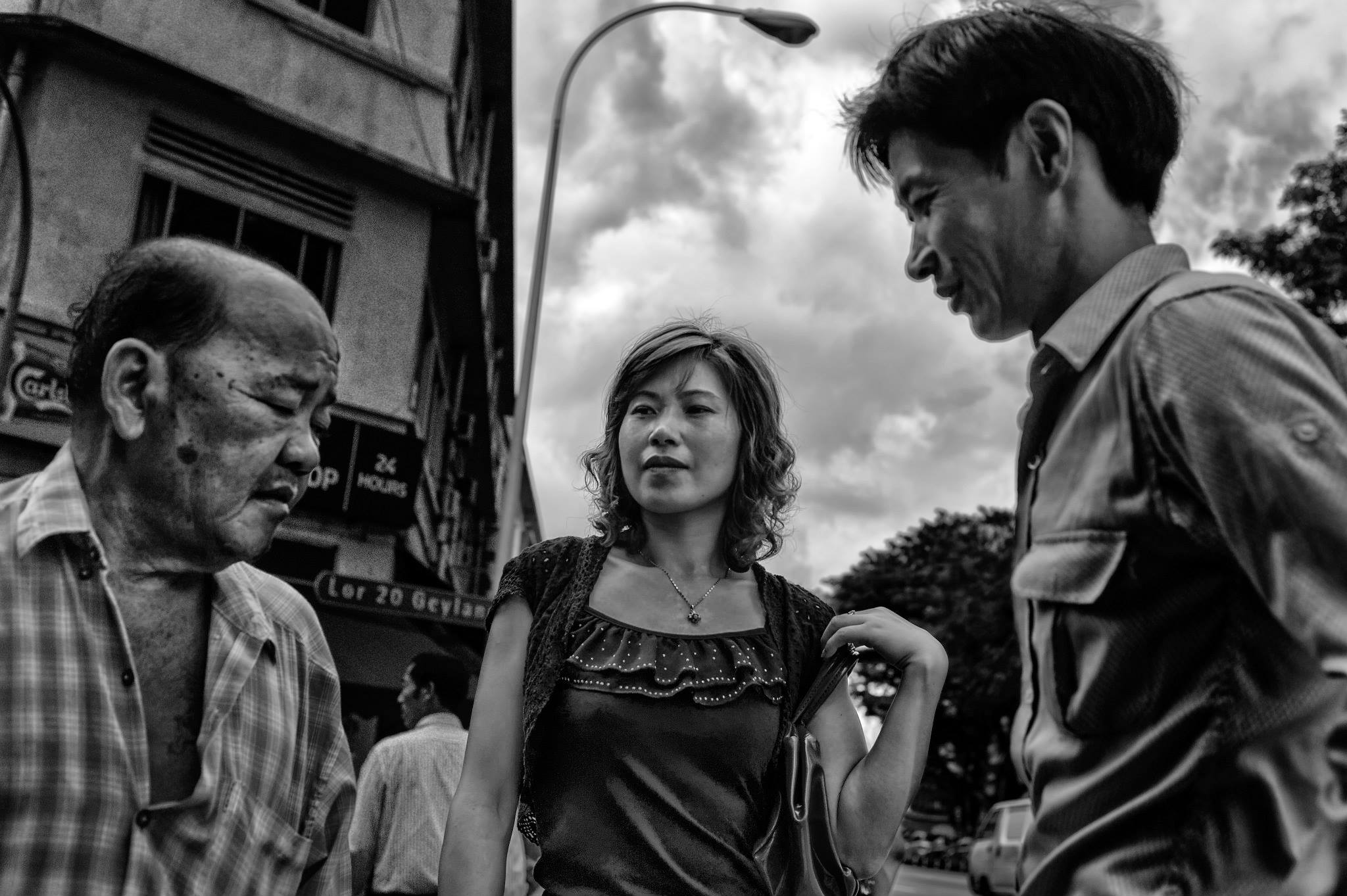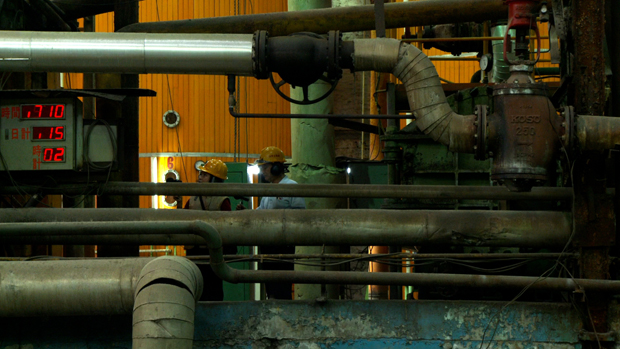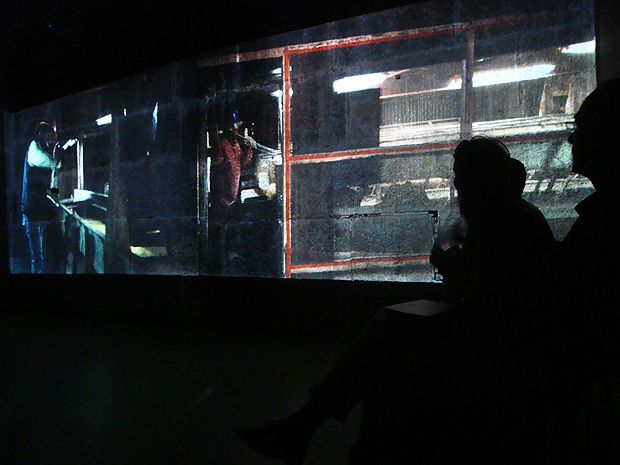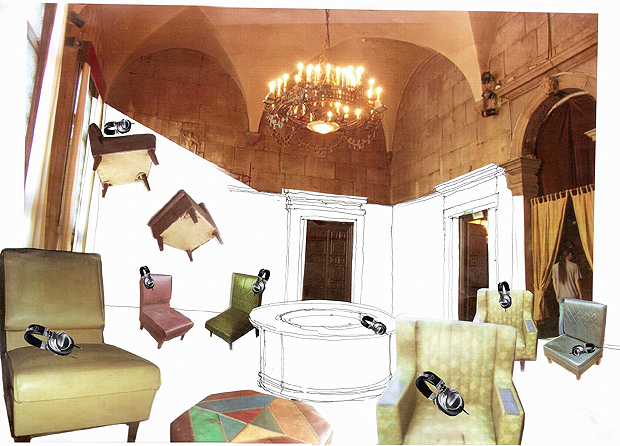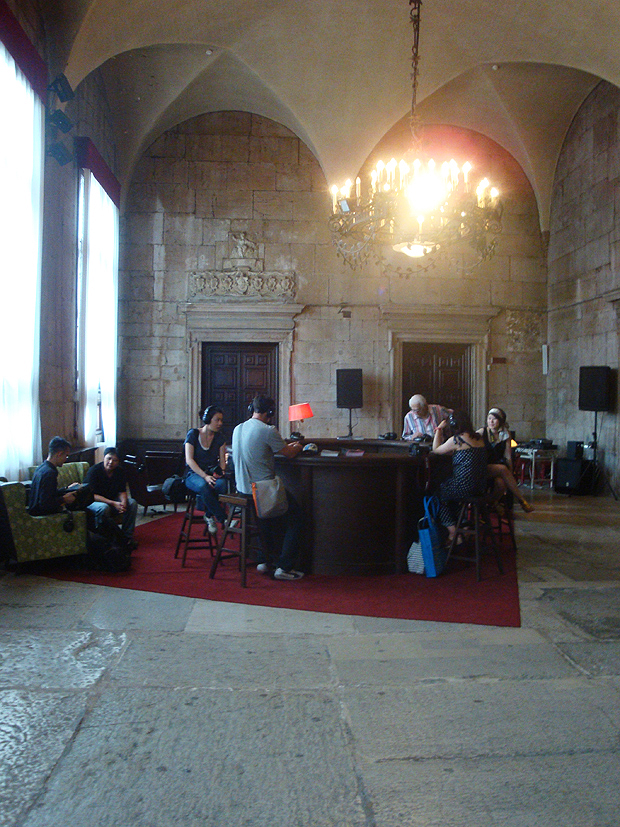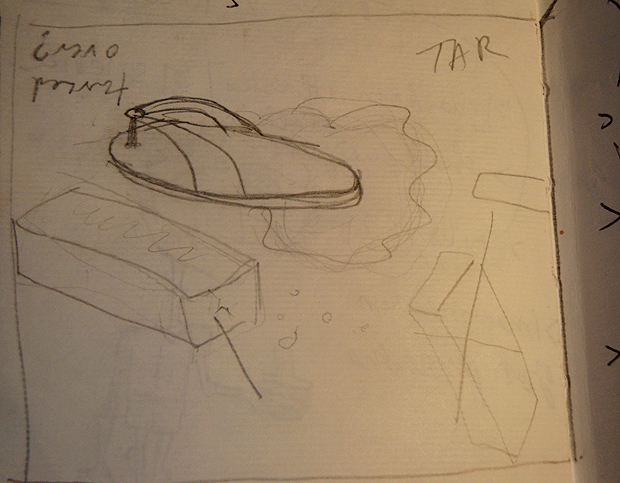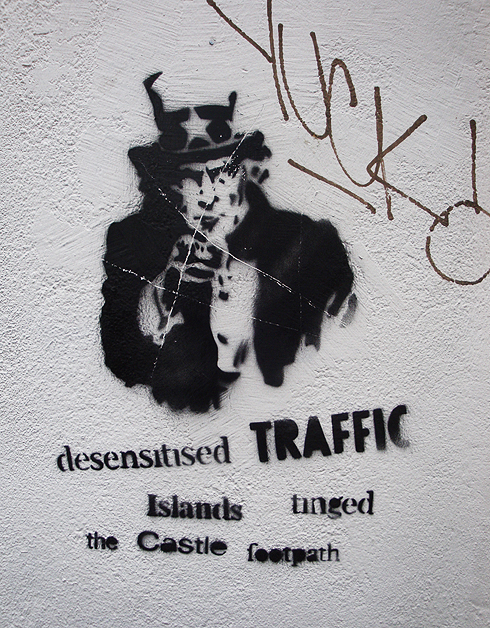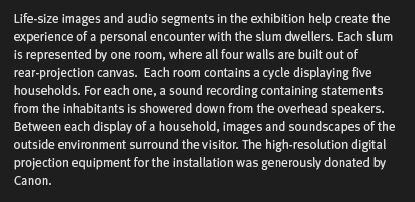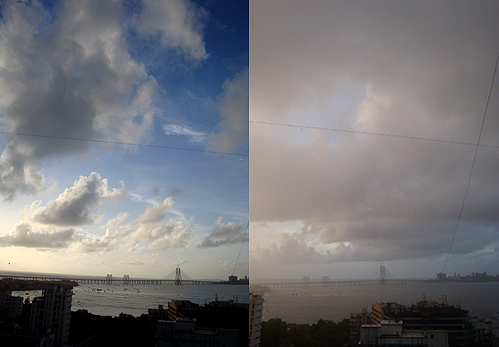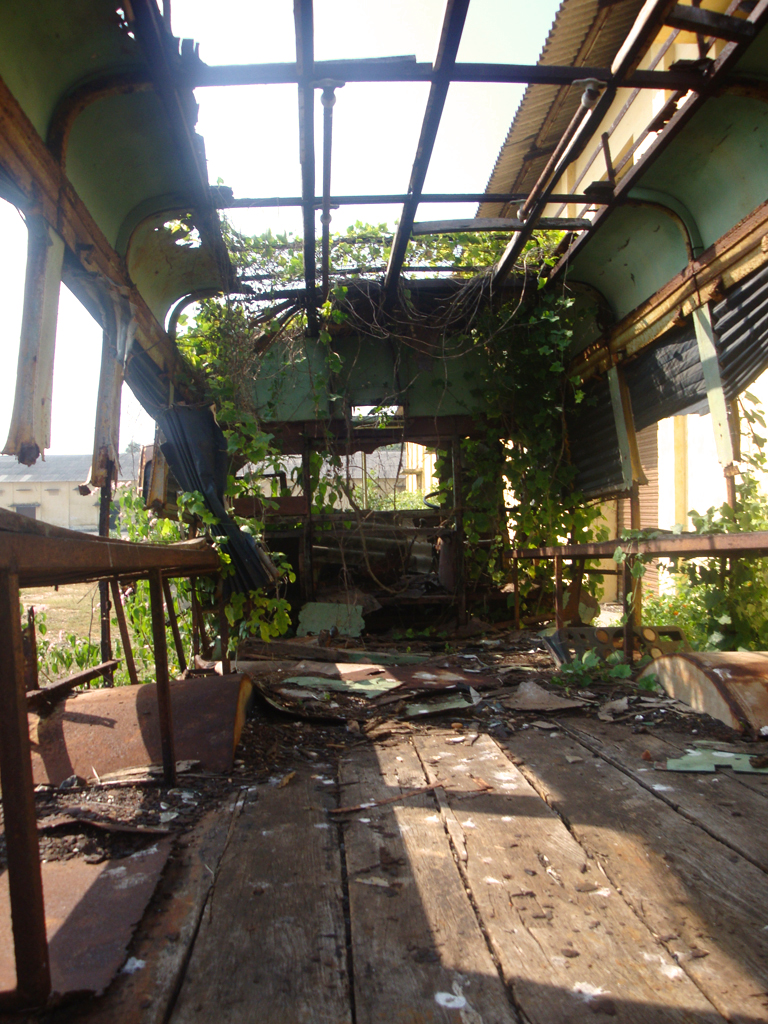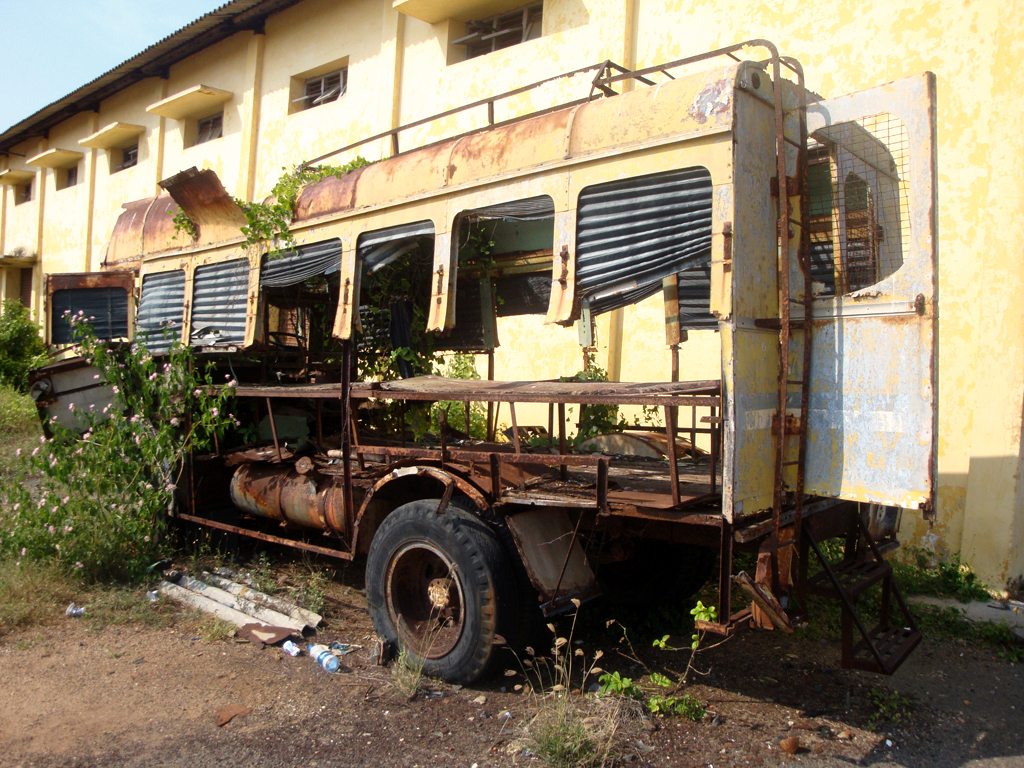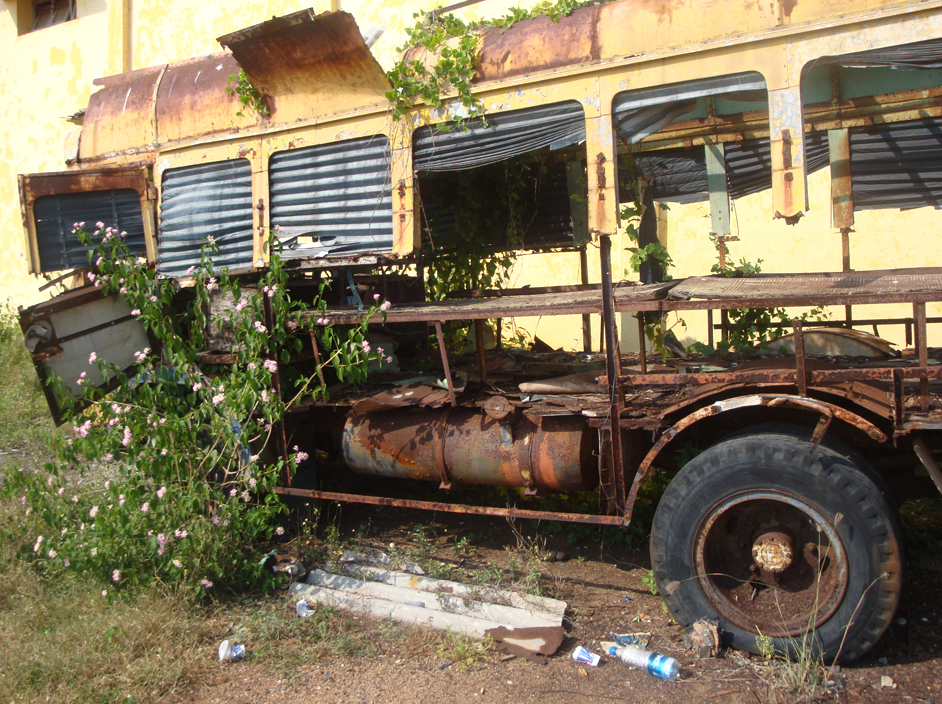Luciano Checco
Fascinating photographs by Luciano Checco of the 'other' side of Singapore.
Fascinating street photographs by Luciano Checco of the 'other' side of Singapore. Check out the entire album here.
Dayanita Singh
I am especially interested in her attempts to express her own visions of a place or city, opposing the singular story people usually expect about India, that of 'sensational catastrophes and human failures'
Phil mentioned Singh in connection to my work on Mumbai because of her series of photographs titled Dream Villa. Her landscape images of Mumbai resonate with the kind of video I'm using for my installation. I am especially interested in her attempts to express her own visions of a place or city, opposing the singular story people usually expect about India, that of 'sensational catastrophes and human failures' (Cotter, H. 2005). Dream Villa 11. 2008. Dayanita Singh [Image Source]
House of Love 2010. Dayanita Singh. [Image Source].
Reference: Cotter, H. 2005. Objects of Repose and Remembrance. New York Times. [online]. Available from: http://www.nytimes.com/2005/03/30/arts/design/30cott.html?ex=1172638800&en=840b508f152bce9e&ei=5070 Date Accessed: 21st July 2011.
Degen, N. 2008. Dayanita Singh. Frieze Magazine. [online]. Available from: http://www.frieze.com/shows/review/dayanita_singh/. Accessed: 21st July 2011.
Dayanita Singh: House of Love. La Lettre. [online]. Available from: http://lalettredelaphotographie.com/entries/dayanita-singh-house-of-love. Date Accessed: 7th August 2011.
The Heard and Unheard
'By constructing an "architectural music-space...made possible by the microphone," Music While We Work explores how artistic practice can intervence in the social space of labor production at the intersection of history and everyday life.'
At the Taiwan pavilion, artists' Hong-Kai Wang and Yi-Hsien Su created soundscapes that transformed the way I look at how sound can be used in installation work. Hong-Kai Wang's work especially connected with my attempts to use sound to comment on Mumbai's atmosphere and culture. She says,
'By constructing an "architectural music-space...made possible by the microphone," Music While We Work explores how artistic practice can intervene in the social space of labor production at the intersection of history and everyday life.'
Hong-Kai WANG. Music While We Work. Huwei, Yunlin, Taiwan. 2011. Audio and video installation. Video still by Yann Tonnar. Courtesy Hong-Kai WANG.Taiwan pavilion at Venice Biennale 2011. [Press Release].
Music While We Work by Hong-Kai Wang. (2011). Installation photo by Aditi Kulkarni. Taiwan pavilion at Venice Biennale 2011.
In addition to these two artists the sound bar had a wide variety of independent music and sound compositions from Taiwan to sample and enjoy.
Sound Library Bar design by Kuo-Chang Liu. Taiwan Pavilion. Venice Biennale 2011. [Press Release].
Sound bar library at Taiwan pavilion. Photo by Aditi Kulkarni. Venice Biennale 2011.
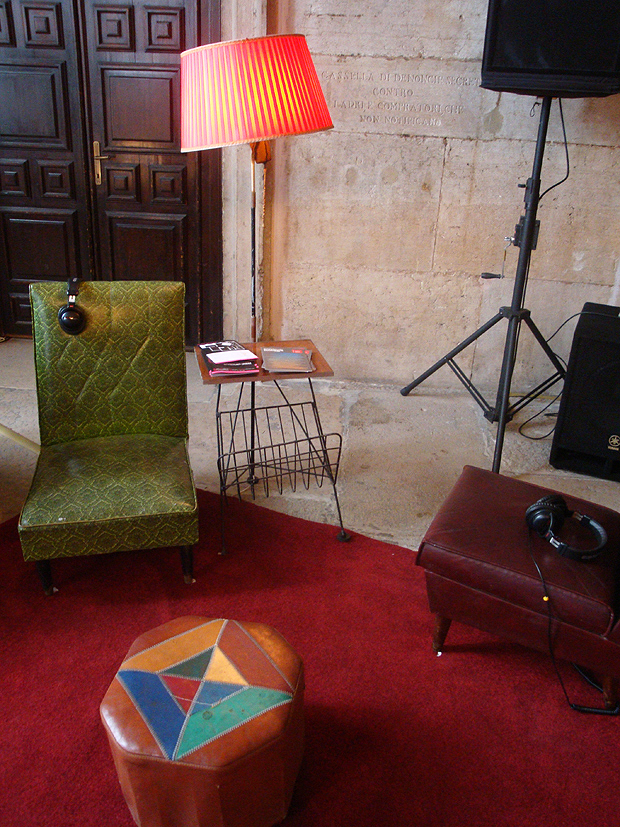 Sound bar library at Taiwan pavilion. Photo by Aditi Kulkarni. Venice Biennale 2011.
Sound bar library at Taiwan pavilion. Photo by Aditi Kulkarni. Venice Biennale 2011.
'I think the most important and uninvestigated architectural music-space of our time is the imaginary space made possible by the microphone...a space that does not exist in any form in any place in the everyday world.' (Ashley,r. 2009 cited in Hong-Kai Wang, 2011. p.17)
In her artist statement Hong Kai Wang quotes American avante-garde composer Robert Ashley, and I found these lines especially relevant. My aim is to transport the audience to Mumbai, my hometown and I agree that this relation between sound and essence of place, though immensely powerful is often ignored.
Reference: Hong-Kai Wang. (2011). Music While We Work. Venice: Palazzo Delle Prigioni. Notes: The Heard and the Unheard: Soundscape Taiwan. The Exhibition of theTaipei Fine Arts Museum of Taiwan. The Taipei Fine Arts Museum of Taiwan. Curator: Amy Cheng. Artists: Hong-Kai Wang Yu-Hsien Su.
Laundry Room City
![]() Participants: Michael Moore, Samantha Else, Baran Saragul, Rina Miyake, Ben O'Shea, Taro Morimoto, Yi Lu, Tanya and me.
Photos by Samantha Else and me. Paper-mache dolls and houses by Yi Lu. Video and installation set-up by Aditi Kulkarni.
Participants: Michael Moore, Samantha Else, Baran Saragul, Rina Miyake, Ben O'Shea, Taro Morimoto, Yi Lu, Tanya and me.
Photos by Samantha Else and me. Paper-mache dolls and houses by Yi Lu. Video and installation set-up by Aditi Kulkarni.
Since I live in a building full of artists, I decided to invite everyone to one of my spontaneous experiments with the Mumbai videos. Using objects I found in the laundry room such as pieces of thermocol, cardboard boxes, chairs, clothespins and piles of yellow pages I created a crowded, urban space. No sound was used since I couldn't find speakers. After the first thirty minutes of discussion and feedback, people started adding and subtracting to the work, literally "playing" with the objects I had collected and even adding their own. Overall it was exciting since I felt it was relevant to the process of literally "building" a city which is unplanned and crowded like Mumbai, filled with so many different people. Eventually Yi Lu added her own work to the installation; fantasy objects such as houses and dolls made of paper-mache.
This event lead to the collaborative work Tobari no Akari by Taro Morimoto, Yi Lu and me. It also formed the base for my later experimentation with City Memories. Sam and Michael came up with the suggestion to use lego, which lead to Lego city #1.
More on Mumbai Lights
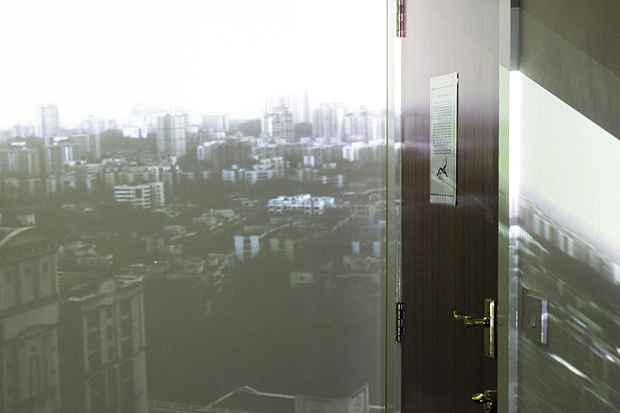
 ^Texture: Projecting on the floor carpet.
^Texture: Projecting on the floor carpet.
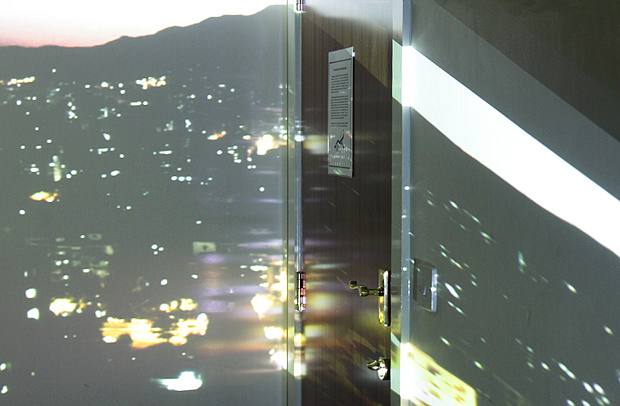 ^Distorted night video on the same door.
^Distorted night video on the same door.
 ^Texture: Regular projector produces visible lines and pixels that cover the wall.
^Texture: Regular projector produces visible lines and pixels that cover the wall.
This is a series of experiments on how Mumbai city lights and sound interact with familiar spaces around me. Earlier I used overlapping projections and shadows to express a conflicting bipolarity within Mumbai. As I attempt to integrate relevant space and sound into the experience, location is one of the most important factors that come into play. One option is to use the projections and video in a suitable outdoor space, and the other is to use a place personal and familiar to me, referencing my memories of the city and my identity as a Mumbaikar. Here I've experiments on the walls, ceiling and floor carpet, observing the effects of the night videos and day videos on various coloured surfaces and corners. The results encouraged me to try more spontaneous variations, rather than make just one well-planned installation.
Installations & Inspiration
Gerry Judah Paintings.
Fire with Fire (2010) by Isabelle Hayeur 3 channels video installation. Video projection of 15 minutes playing in continuous loop. 3 Blu-ray players, 3 video projectors. 112 West Hastings Street, Vancouver. Fire with Fire has been commissioned by The Vancouver 2010 Cultural Olympiad. Curator : Marlene Madison.
Rosa Barbara at Tate Modern. Article about the work here.
Show Homes and Display Desire (2007) by Vesna Pavlović. "Within the “Display, Desire” installation, the prints simultaneously function as images of display and display of images. Strange details of the American home are exposed, through the language of cinema and mechanisms of projection. The projection of black and white transparencies onto semi-transparent Plexiglas screens suggest the plastic quality of the interiors, and within the overlapping projection spaces, the images transform, exploring possible representations of the photographic medium itself."
Art Direction & Visuals: Deniz Kader – Candaş Şişman, Music & Sound Design: Görkem Şen, Project Management: Erdem Dilbaz, Modelling: Gökhan Uzun – Can Dinlenmiş (prospektif.org)
JR's (French Street Artist) TED Prize Wish: Use Art to turn the world Inside Out.
Place-Making
Notes on urban memory, place-making and its relation to the interpretation of the city in contemporary art and architecture.
During my tutorial with Ronnie Inglis we spoke about the meaning behind the autobiographical trend in my work and further topics of study, especially in relation to place-making. We discussed my previous areas of interest such as the city and fantasy, collective versus personal urban memories, place-making in relation to site-specific art, use of the shadow, and representing extremes. He directed me towards the book History of the Shadow which greatly influenced my work in the following weeks. The topic of Genius loci is relevant because I am interested in shooting my projections in outdoor locations. According to Thompson (2003, p.67) 'the Romans believed that places, like people, had inner spirits that determined their essences,' and similarly I was interested in this essence of Mumbai. Thompson also mentions that for genius loci to be useful rather than a mere magical notion it should be a combination of 'character, local distinctiveness and ecosystem' (2003, p.69). This lead to the idea of representing the city as a fictionalized creation, in the same way a writer creates a fictional character.
And a thing's character changes and develops over time. This can happen slowly or through abrupt events. The reading made me realize that Mumbai has not developed slowly or without trauma. It has grown in bursts and starts. Several traumatic events such as the '93 bombings and the more recent 26/11 Taliban attack have affected the city. We could argue however, that despite these severe shocks the essence of the city remains the same. According to Norberg-Schulz (cited in Thompson, 2003, p.70) "places can change, sometimes rapidly, but this does not necessarily mean that the genius loci changes or gets lost."
An excellent example of the genius loci being kept intact by an architect is the above landscape park Landschaftspark Duisburg-Nord by Peter Latz. The place was 'traumatized by industrialization and deindustrialization' and the architect built upon 'its existing character, creating fern gardens in ore bunkers and making their mass concrete walls into facilities for rock climbers' (Thompson, 2003, p.72). This connects to my idea of using appropriate objects, materials and sites that are relevant to the trauma and violence of the city.
^Cotton 56, Polyester 84 is a play about how the failed Mumbai Mills are getting converted into malls and entertainment complexes. Citizen's groups demand that the land should be converted into open parks and low cost housing, but slowly and surely all mill land will be sold to builders (Shanbag, 2006).
^Another abandoned Mumbai Mill.
As sites these are beautiful and tragic places that express this violent and crushing conflict between the here and the elsewhere, the undesirable and the desired. I can only pursue this direction further once I am back in India. At the same time it brings me to question my interest in these places, since my knowledge of these events is purely historical, through media reports and local people's opinions. At this point in my practice I would prefer to express issues and places that I have personally and directly experienced.
Another important aspect of place is memory, which is in turn closely related to history. Historical buildings such as the mills compounds and their replacements are part of a general history of the city. Individual memories have a completely different flavour. In the book City of Collective Memory the author underlines this difference by proposing that history and memory are bipolar attributes because history is linear and memory non-linear (Boyer, 2001, p.67). Collective memory is 'a current of continuous thought still moving in the present, still part of a group's active life, and these memories are multiple and dispersed, spectacular and ephemeral, not recollected and written down in one unified story' (Boyer, p.67).
Another fascinating point is that this urban memory is 'an antimuseum and not localizable' (Boyer, p.68). This means that my earlier work using popular landscapes and landmarks was a reference to history, a revision of a recognizable historical reality. It is also a reference to memory since I have taken various historical elements and placed them in a contemporary context. Now that I am using scenes that are not famous or instantly recognizable such as the Thane landscape I am removing "historical" elements from the work.
The next topic is framing. We frame the place or city 'by travel, in the theater, at the museum, from the cinema, through its architectural compositions' (Boyer, p.70). The panorama as a framed image is questionable - the city of the panorama is criticized for its 'rational scientific methods,' 'describable pasts' and 'predictable futures' (Boyer, p.68). The author criticizes common recycled views of the city saying 'We have learned to gaze upon the city as artifact through illustrated portfolios and architectural guidebooks that have their own procedures for characterizing place and tradition' (Boyer, p.69).
And finally I'll quote Victor Burgin (1996, p.7) who says that 'we cannot know a 'city', only those of its places we come to frequent.'
Reference
Boyer, C (2001). The City of Collective Memory, Its Historical Imagery and Architectural Entertainments. MIT Press.
Burgin, V. (1996). Some Cities. London: Reaktion Books Ltd.
Thompson, I. (2003). What use is the genius loci? In: Menin, S.(eds). Constructing Place, Mind and Matter. London: Routledge. pp.66-76.
Pile, S. and Thrift, N. (2000). City A-Z. London: Routledge
Wikipedia. (2011). Urbanism [online] Available from http://en.wikipedia.org/wiki/Urbanism. [Accessed 23rd April 2011].
Mumbai Memories
After noticing the autobiographical trend in my work, I looked at my past posts on Mumbai. I've kept a partially anonymous life blog since 2009 and this became an important resource for me to remember what images and events I felt were important enough to blog about. The oldest posts about Mumbai are from August 2009. I've inserted some photographs from the life blog below:




Update April 27th: The image below is a sketch of a concept inspired by one of my school memories of Mumbai. While travelling on the school bus, we stopped to drop off a student and I noticed a single chappal on the tar road. There was a small pool of bright blood beneath it, and a few bricks lying around it. I wondered what happened, and guessed that there had been an accident recently, and these were the leftovers. It had definitely happened recently, but no crowd of onlookers remained and the traffic on the road avoided the single slipper and bricks easily. The idea is to recreate this memory as I remember it, with the blood being bright and overshadowing the rest of the details within the picture.
Abigail Reynolds
Abigail Reynolds: Layering and tessellation.

"The Universal Now: Relief sculptures using found photographs of the same place taken at different times." | Seventeen Gallery.
Reflection: Contemplating possibilities of adding layers to the already existing two layers of light as projections. It is possible that a third city panorama could exist behind the two already conceived, though it would be a print or a painting. It could also be a texture to add another layer of interactivity, that of touch.
Documentary: Changing face of Dharavi
Changing face of Dharavi, a documentary by journalism student Anisha Sharma. [youtube=http://www.youtube.com/watch?v=Tv8KC1bES50]
Brick Lane and London
My first real trip to London (I feel like such a tourist): it was only a day but we covered quite a bit, bravely braving the wind and rain to see as many art shows and galleries we could within a day. And we successfully covered at least ten, I think, popping in and out of the tube and walking and walking...

The Places We Live
The website is an interactive multimedia presentation of how people live in urban slums. Dharavi is represented with a combination of interactive space, photographs, stories, and sound. I saw this about one or two years ago, and now that I am finally in a position to spend time researching my city, I remember how much this spoke to me. It manages to articulate, to some extent, what it is like to live in the slums of Mumbai. Although I have never lived in a slum, the use of everyday street sound is haunting and familiar, nostalgic now that I am not living in Mumbai.
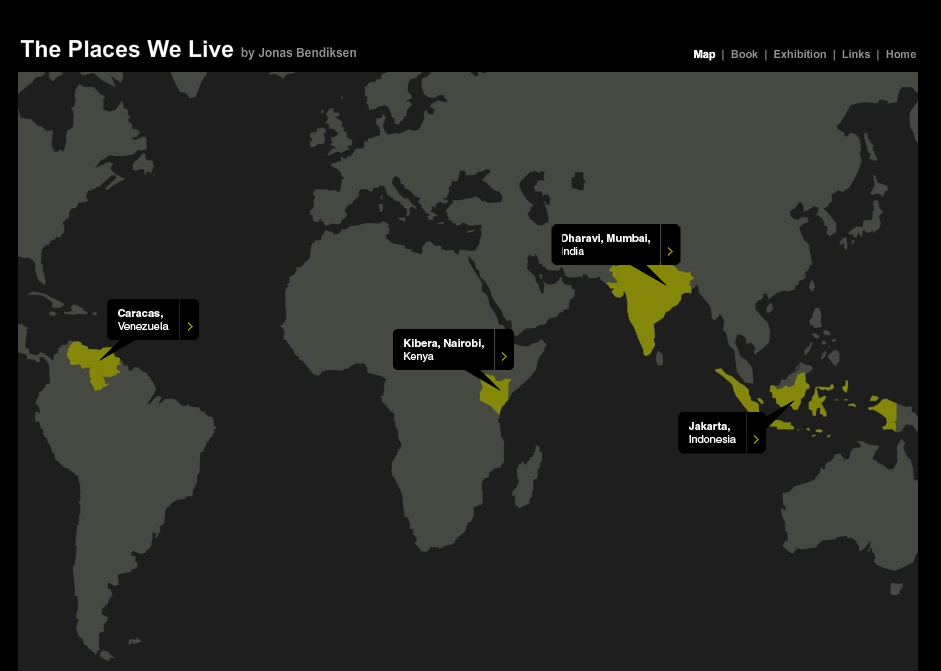
The exhibition and website are based on Jonas Bendikson's documentation of how people live in slums around the world The exhibition was first put up in 2008:
Local Train Signage
Crudely painted stenciled signage from the relatively new Mumbai local trains. The 'Alarm' sign inside the compartment is pretty legible, but do the same in Marathi, and suddenly it is more difficult to read especially because it's partly scratched off.
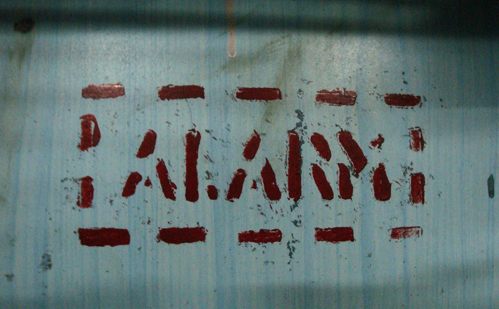
I can figure out the first and last word, it says apatkaleen (something) uplabdh. Then the arrow points to the footboard of the compartment door. A real puzzle, typical of the Indian government or should I say Railway authorities. I can guess it means 'In case of emergency (aapatkaleen) use this (uplabdh)' then the arrow pointing to the footboard. God only knows what it's supposed to point to.
It's an excellent example of the typical contradictions you face everyday in Bombay. The new trains have this cool new speaker system which announces the nearest station in three languages, and at the same time the emergency help services and signage are at this level.
Ramoji Film City
An entire city of film sets, from Bollywood and Hollywood to famous monuments and what not. Located in the outskirts of Hyderabad the place seems to be more of a tourist destination than a place for movie directors to find their perfect location. Apparently, it isn't as popular as it once was in the film industry, but it's still an entertaining experience. A bright red tourist bus takes you around the massive place, while a guide rattles off the number of movies and famous directors that have chosen locations here.
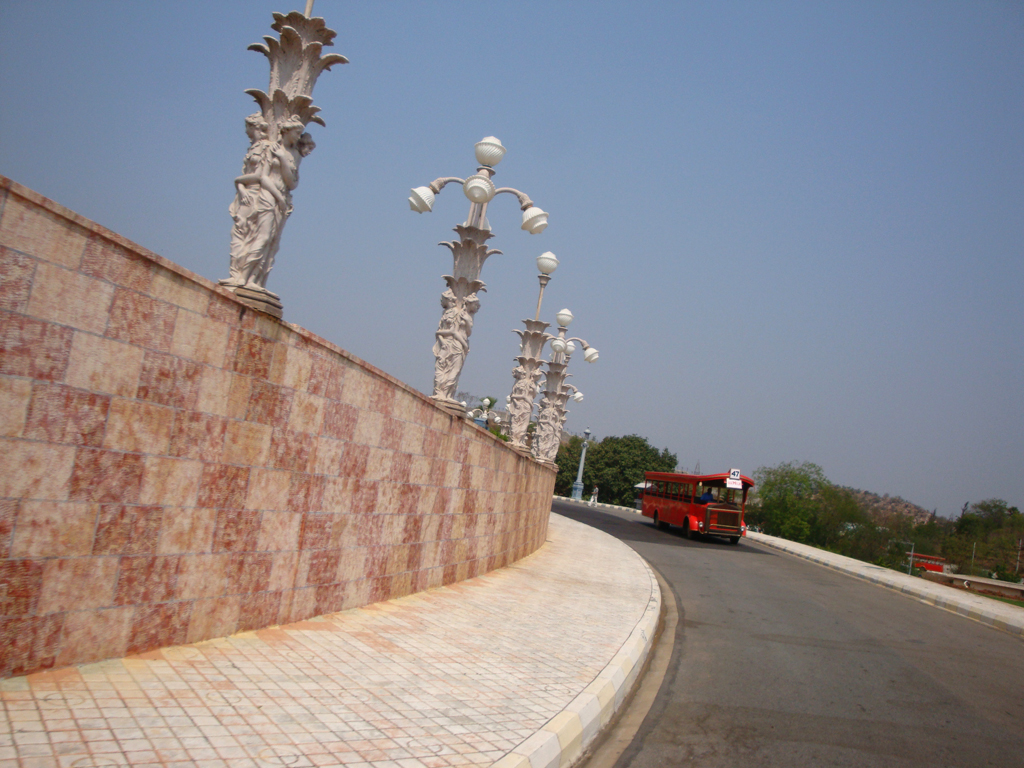
Hollywood...!
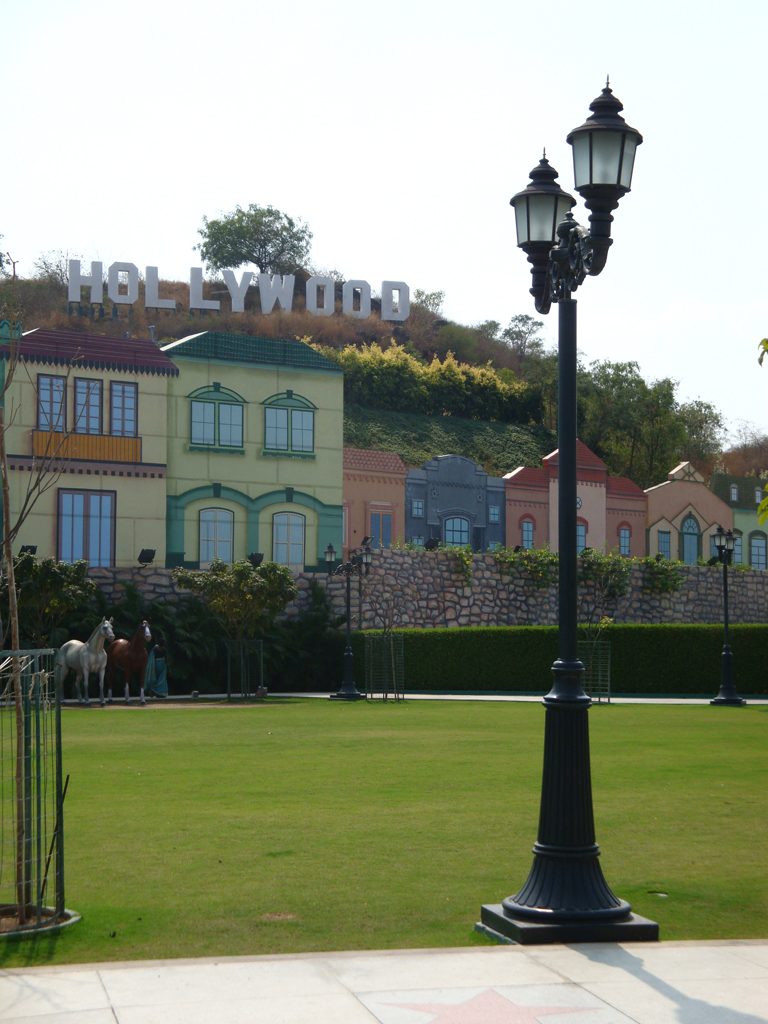
This is called Hollywood st. for some reason, where the houses look western, perfect for a scene in a foreign country :)
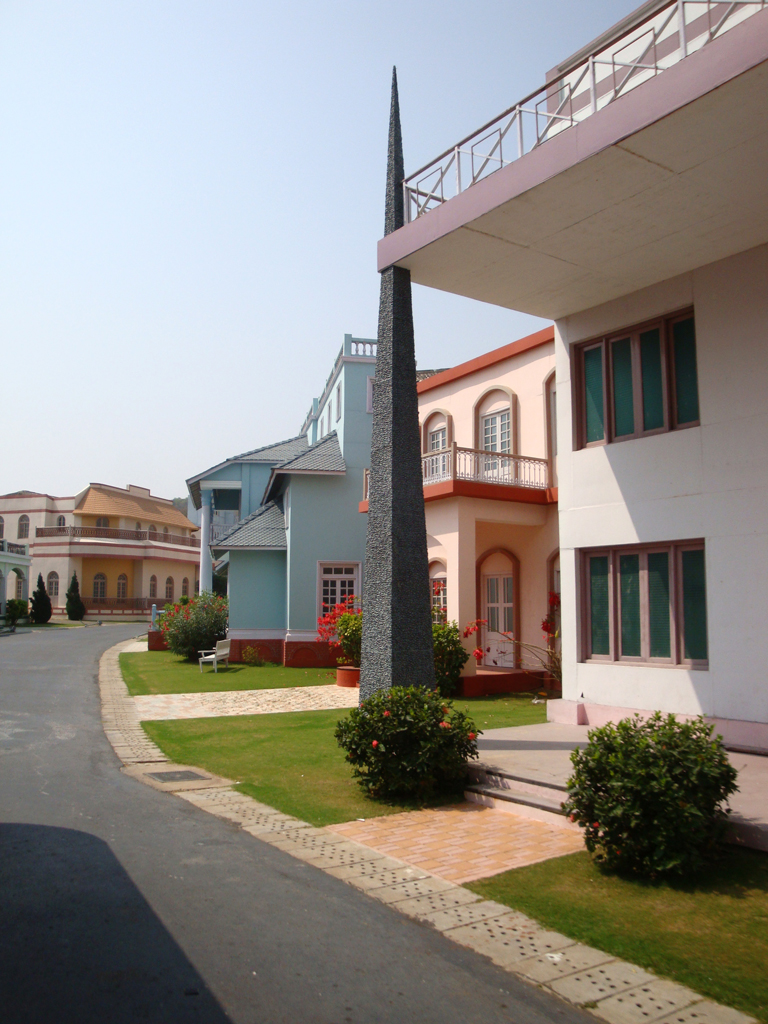
Jimmy's Drive In
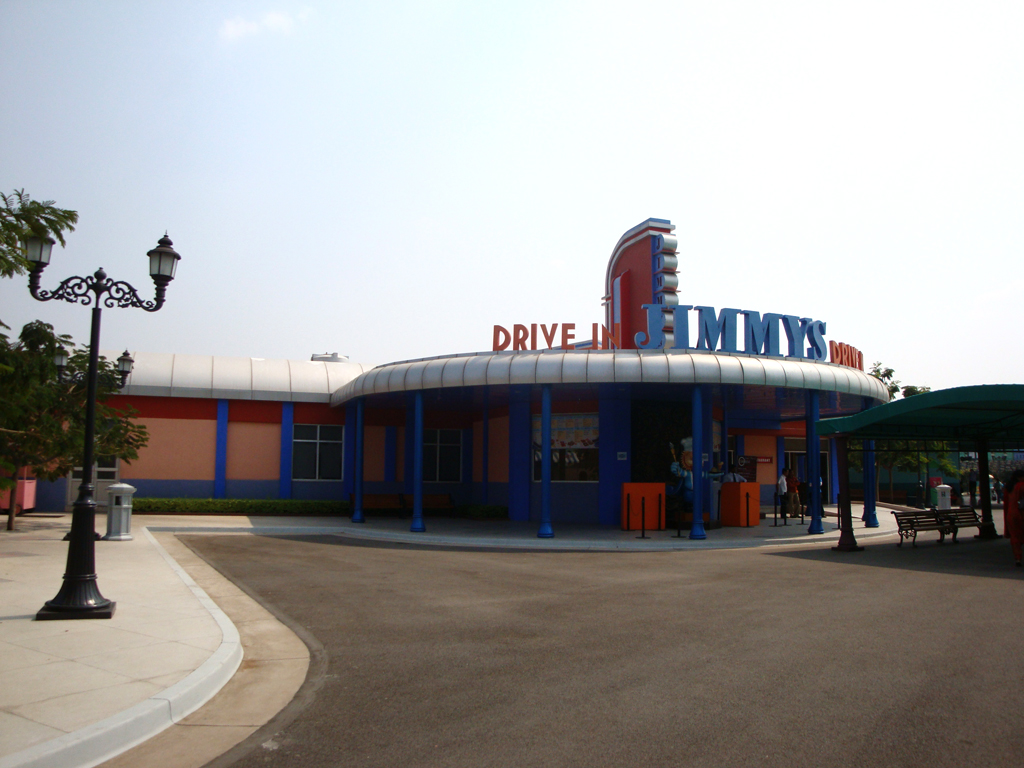
The gas station near Jimmy's:
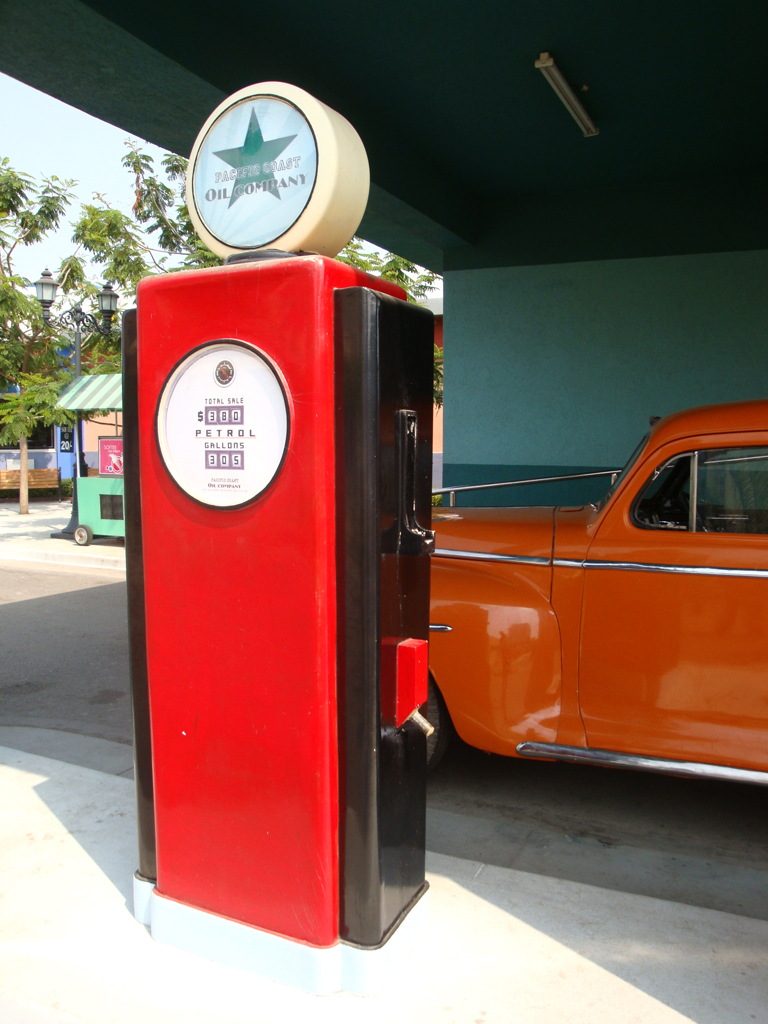
A train engine which says Texas Mail:
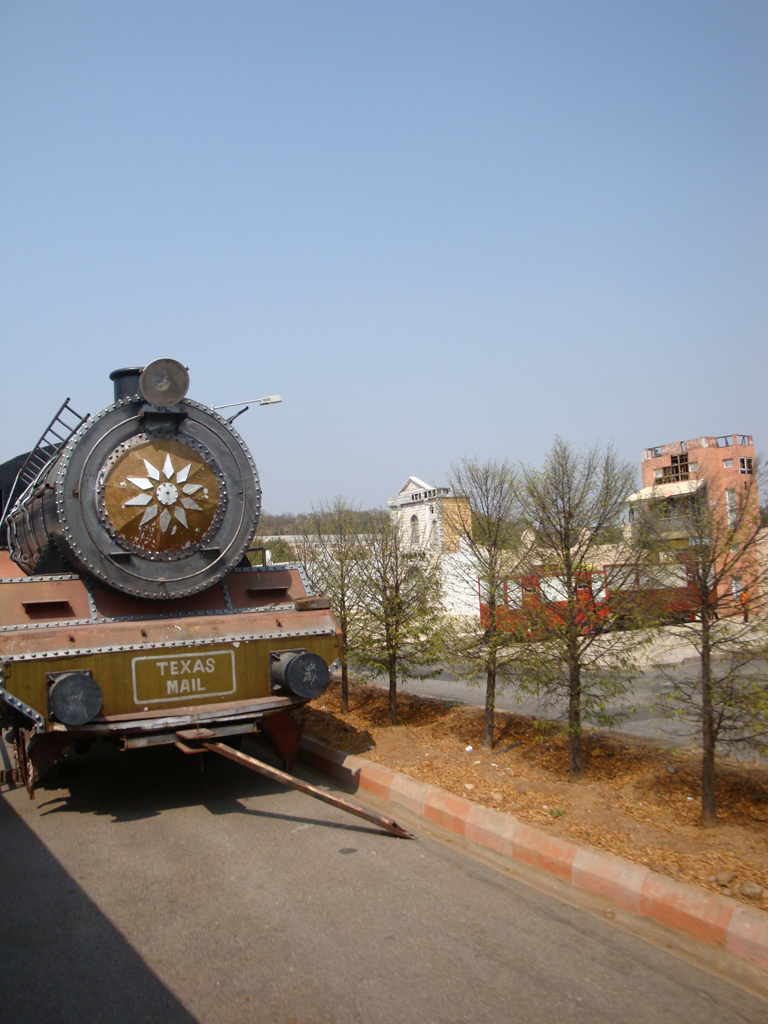
The wild west area has several actors and stunt men who perform an entire action sequence, blowing up banks, etc.
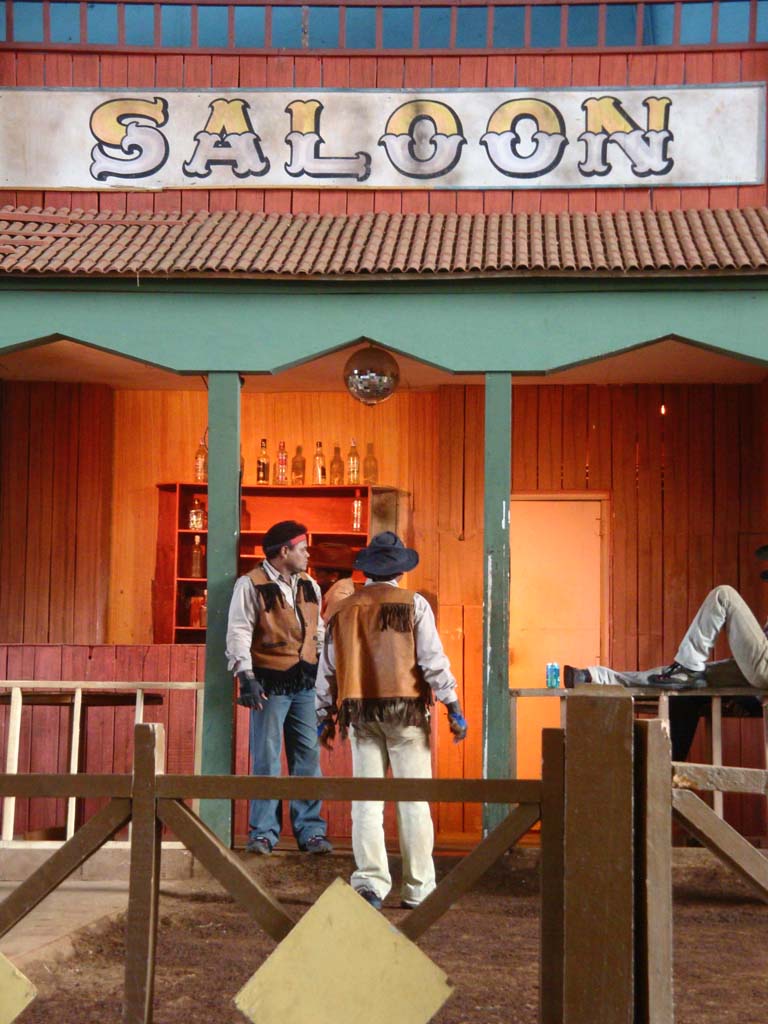
Now for the more local, Indian sets! A fort, or it would be more accurate to call it the entrance to a fort.
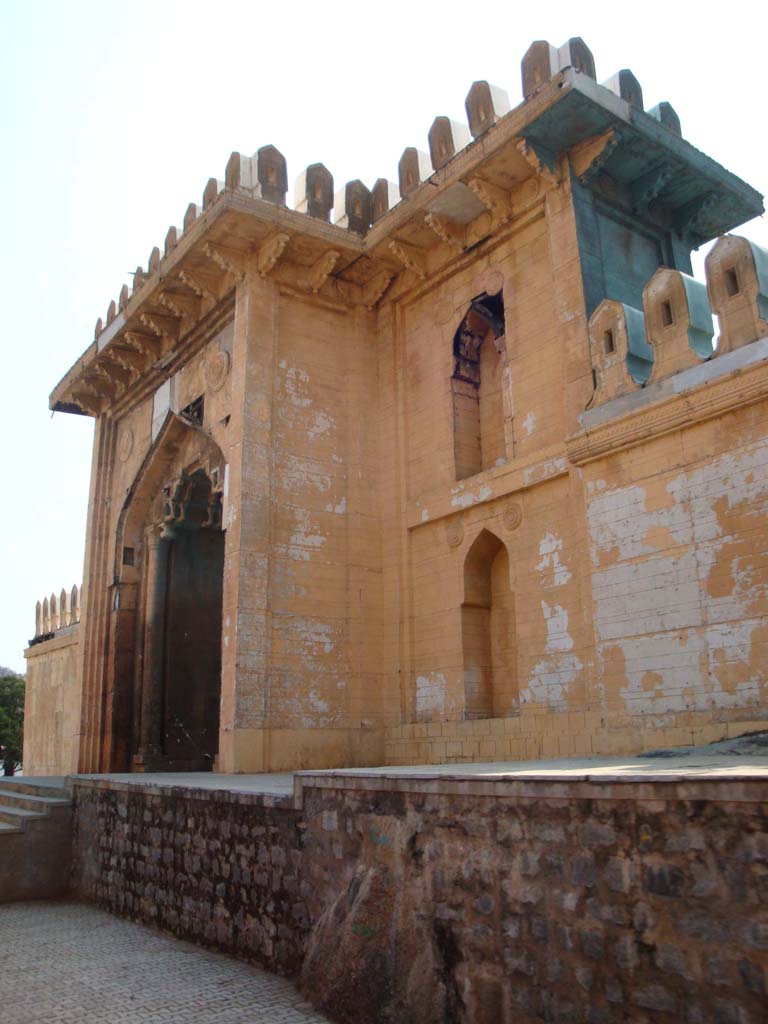
Chikatpally police station, although the set was dismantled to some extent, it was worth a shot :)
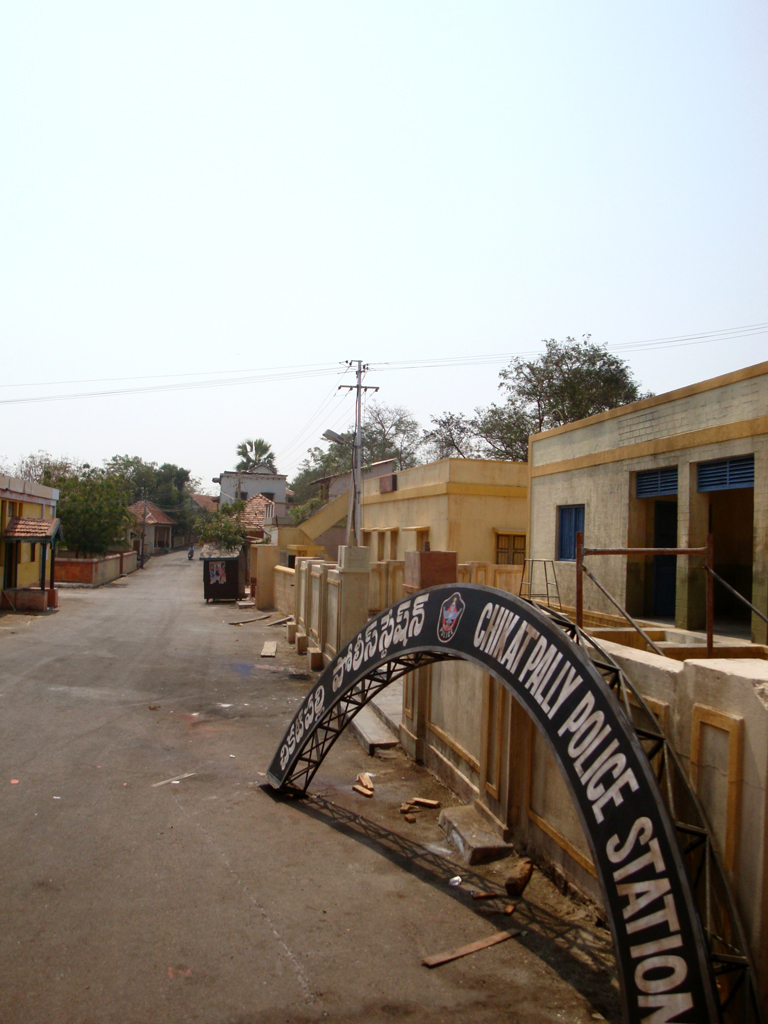
A fake airport, looks like what it may have looked like 10 or 20 yrs ago. Completely outdated.
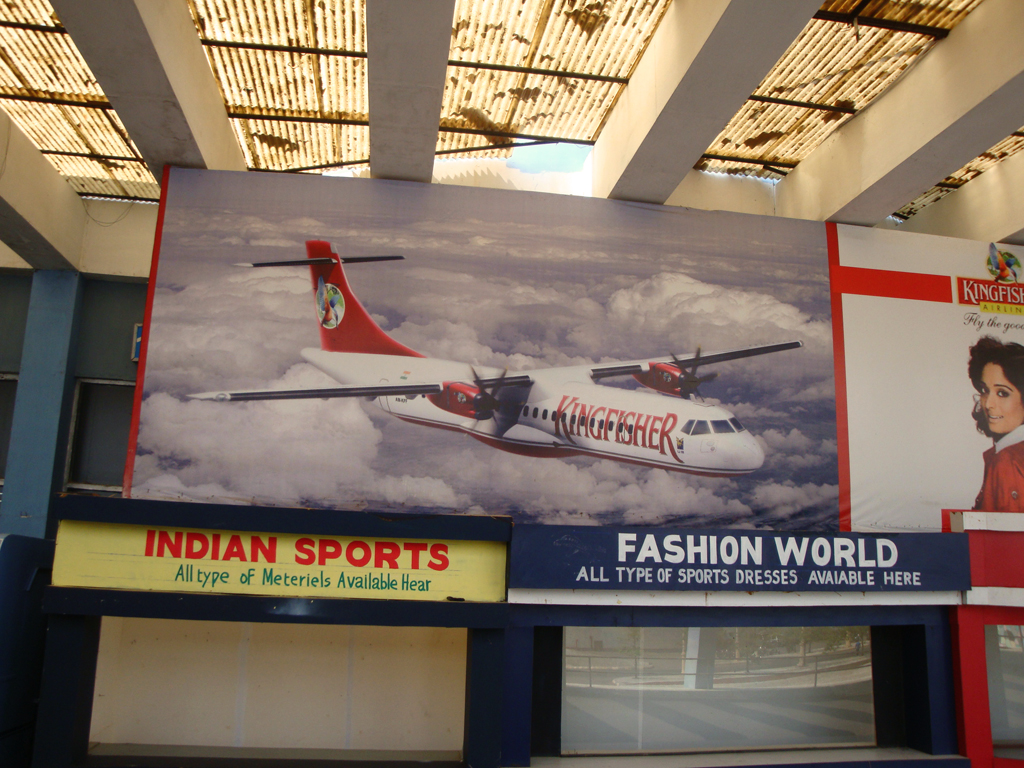
Inside the airplane set, look at the number of tourists!
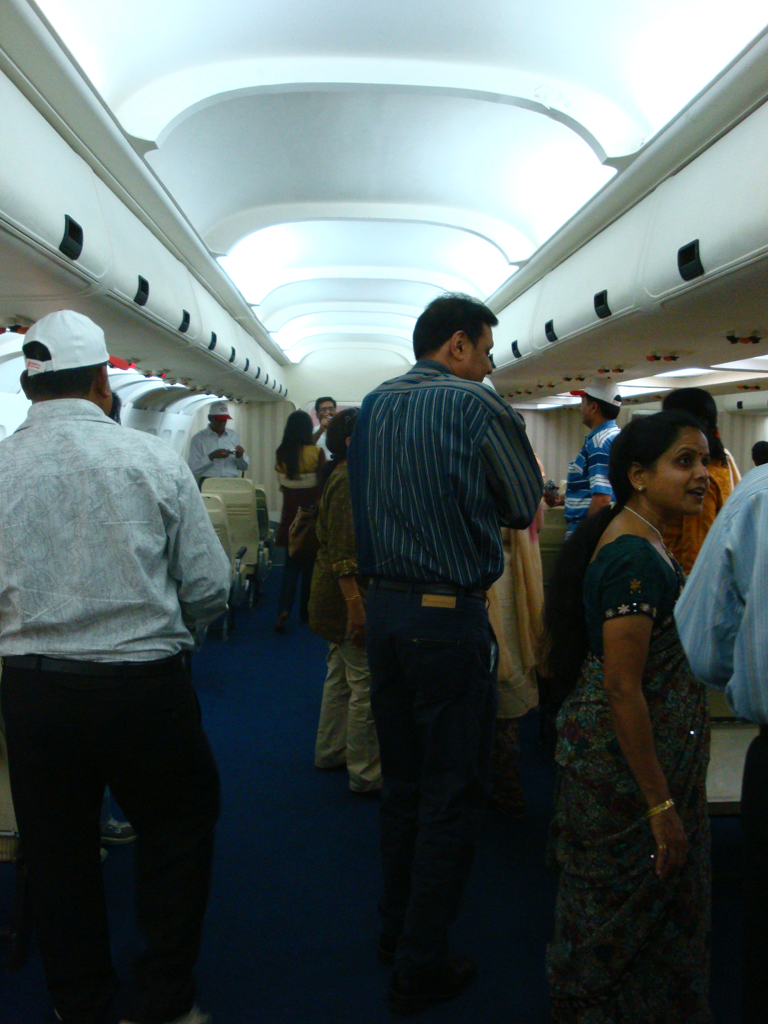
One of the several palace sets, lit up at night.

Giant creepy statues that line some of the pavements.
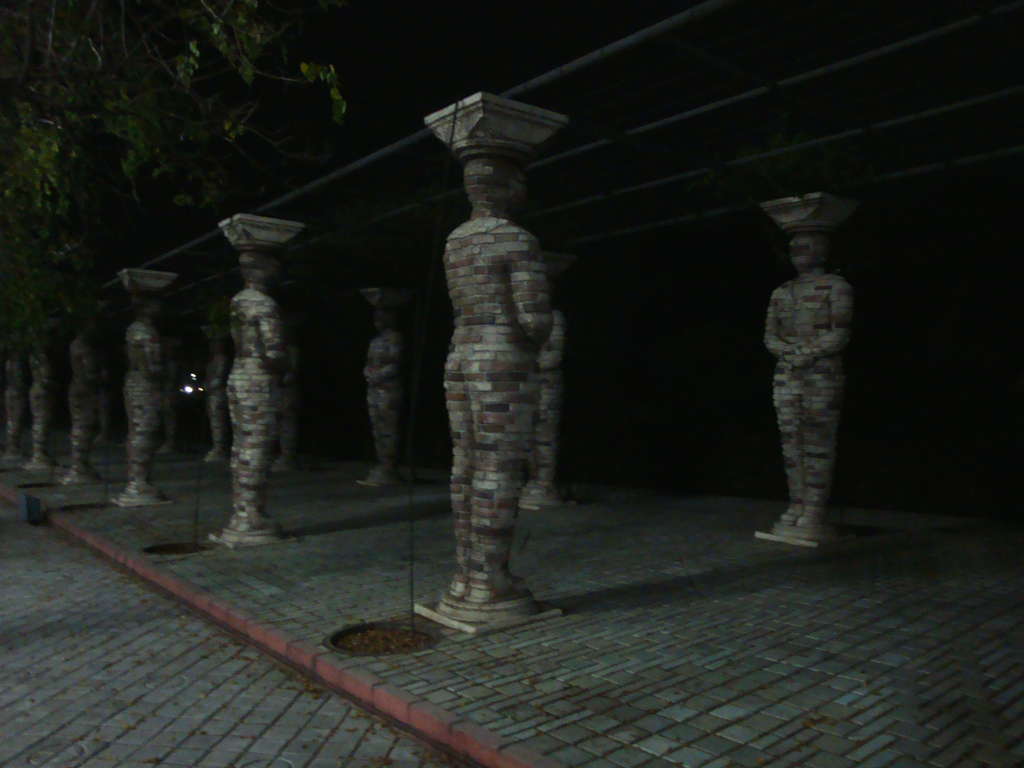
I walk down dark and narrow streets
Some photographs that attempt to describe urban Indian streets at night.












